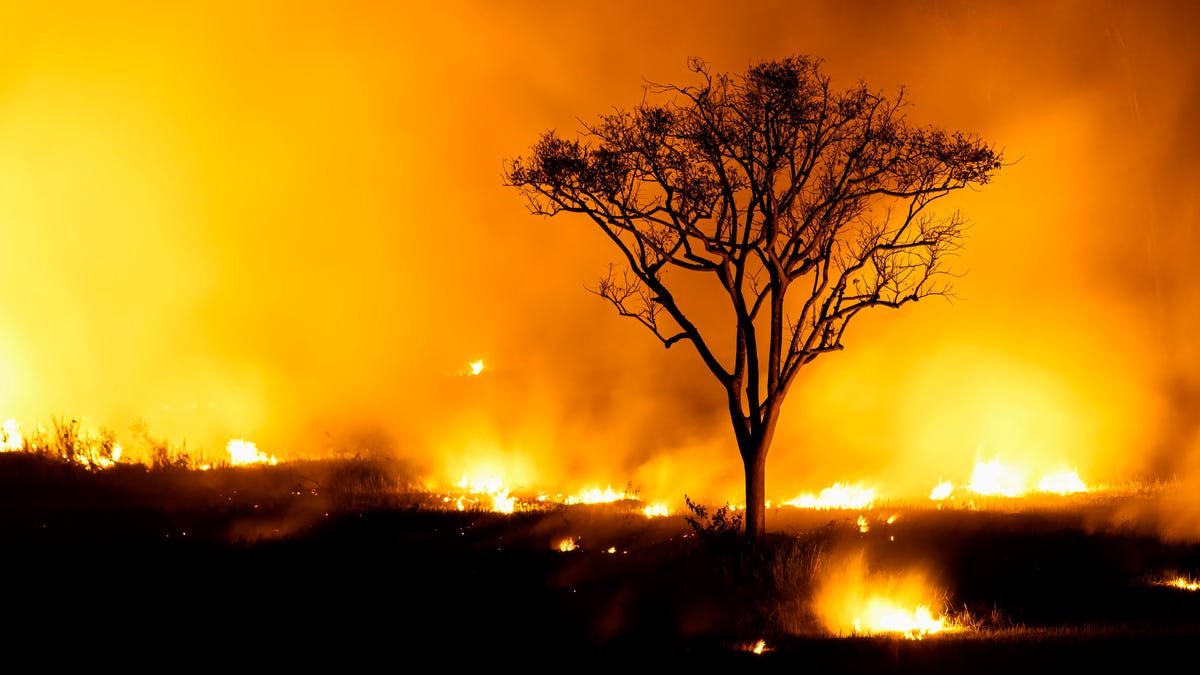
The US South is used to heat, but it’s going to be dangerously hot this week. Memphis, for example, will see highs in the middle to upper 90s with a heat index between 110-115 degrees Fahrenheit, Fox13 Memphis reports. The heat waves bearing down across the US this summer can have a serious impact on public health and on how your home and your work tools function. Extreme heat exacerbates common health conditions, messes with your air conditioning, overheats phones and causes meltdowns for other tech. A new forecasting tool from the National Weather Service aims to make it easier to prepare for the extreme heat.
NWS HeatRisk is a clickable map of the US, which is used to forecast extreme heat and assess the impact of that weather on public health. The threat assessment is built on a five-level system that’s color coded for severity, with green representing little to no risk and magenta representing the highest risk. The map contains a seven-day forecast for anywhere in the country, along with the color of the health threat level.
HeatRisk is free to use and worthwhile to learn about for avoiding heat safety issues such as heatstroke. Here’s how to use it.
Read more: This CDC Tool Can Help You Track Heat Risks on Trips and in Your Area
What is NWS HeatRisk?
The National Weather Service’s HeatRisk tool is a free index that forecasts potential health threats due to extremely hot weather. You can click anywhere on the interactive map and pull up a seven-day forecast of risk assessments for any city, town or area.
HeatRisk analyzes how unusual the heat is for the time of year and how long the heat is expected to last, to determine whether there’s a higher risk of heat-related impacts.
Read more: Super Common Health Conditions Can Make a Heat Wave More Dangerous: Here’s How to Prepare
Threat colors
NWS HeatRisk has five levels assessments, each with a different color that corresponds to the size of the health risk:
0 Green
According to the NWS tool, there’s little to no risk involved with the forecasted heat at the green level.
1 Yellow
At the yellow level, there’s a minor risk for people who are extremely sensitive to heat.
2 Orange
The orange level represents a moderate risk to the general public, with impacts possible in health systems and in heat-sensitive industries.
3 Red
Red means there’s a major risk to anyone without access to immediate cooling and hydration, with likely impacts to health systems and heat-sensitive industries.
4 Magenta
The most extreme level is magenta. It’s both a rare occurrence and one that’s of long duration, with no overnight relief, which has likely impacts not only to health systems and heat-sensitive industries but also to infrastructure.
Read more: Wild Weather Ahead: Summer 2024 Could Be a Scorcher With Incoming Heat Wave
Other ways to track heat risks
Similar to NWS HeatRisk, a tool from the US Centers for Disease Control and Prevention, called the HeatRisk Dashboard, allows users to access a seven-day forecast to assess the potential health impact from extreme heat.
Another tool, Data Explorer from the CDC’s Environmental Public Health Tracking Program, offers further HeatRisk information, as well as assessment resources for COVID-19 and other illnesses.
Read more: Here’s How to Keep Your Kitchen Cool (and Lower Your Energy Bill) During a Heat Wave
Heat knows no borders
The summer of 2024 has been a scorcher in many parts of the country, beginning in the early days of the season. Though average temperatures in California haven’t yet been as extreme as on the East Coast, experts say there won’t be many places that are safe from an elevated threat, especially with a major heat wave coming the week of the 4th of July across California.
Russell Vose is chief of the Monitoring and Assessment Branch at the National Oceanic and Atmospheric Administration’s National Centers for Environmental Information. “As the climate continues to warm, most areas will be at an increased risk of some types of climate-linked extreme weather,” he told CNET’s Katie Collins. “Perhaps the best example is extreme heat — it can occur anywhere.”